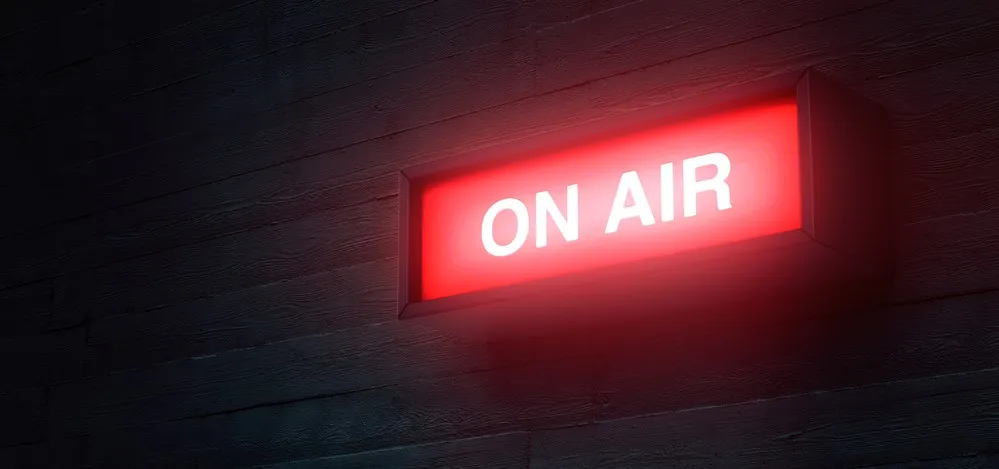
3, 2, 1… Action! Get Started with Live Video
Social media platforms are providing more ways to share in-the-moment content, including live video. While there’s more involved in live video than your standard social media content, it’s a great tool to engage your brand’s audience. Wondering how you can incorporate live video into your social media strategy? Read on for the why, where, what, and how.
Why Use Live Video?
The greatest benefit to live video is the real-time engagement and interactivity it provides your fans on social media. Anyone who watches your live stream is able to comment in real-time, which you can see and respond to while you’re on air. Like calling into a radio show, there’s a feeling of excitement in having your comment read aloud or your question answered live.
The interactivity of live video and the ability to show the people behind a brand encourages a feeling of personal connection among viewers. Streaming live from an event or sharing a casual, behind-the-scenes moment humanizes your brand in the eyes of your fans, creating a sense of personal connection and loyalty that standard social content typically can’t accomplish.
Because it’s so accessible, live video can also give viewers access to otherwise exclusive happenings. Through live video, announcements, conferences, and more can become the focus of an interactive event you host for your fans. Not to mention, because live video is so spontaneous and captured in real-time, your fans won’t expect refined or professionally edited video content like they might for an everyday social post.
Where to Go Live
Practically all the major social media channels now offer some form of live video:
- Twitter (powered by Periscope, itself a livestreaming platform)
- Instagram (including a new feature that allows for easier interviews with influencers)
- YouTube (commonly used for vlogs, gaming, competitions, tutorials, and more)
- Twitch (ideal for gaming, esports, and podcasts)
- Vimeo (often used for enterprise streaming)
Ideally, you want to choose a platform where you already have an existing community of followers. These followers have already shown interest in the content you post, probably including edited videos, and are more likely to tune in when you go live. It also gives you an audience to tease the stream to ahead of time.
Your platform choice should also be based on the tools and technology you have available. For instance, Facebook allows you to go live via mobile or desktop, using a built-in mobile camera, webcam, or professional video equipment. Twitter and Instagram, on the other hand, only allow for live video via mobile. Tools like Vimeo Live allow you to stream up to three events at once.
What to Live Stream
When it comes to what to share via live stream, the limits are bound only by your creativity (and, of course, the terms and conditions of the platform you choose). Common live stream content includes:
- Q&A. Give viewers the chance to have their questions answered by the host of the stream: a representative of the hosting brand, a celebrity, an industry influencer, etc.
Behind the scenes. Share what’s happening behind the scenes of a day at the office or an exciting event. - Tutorials. Take viewers through step-by-step instruction, answering their questions along the way.
- Major announcements and events. Allow your fans a peek inside an otherwise exclusive event, or extend the attendance of an in-person announcement or product reveal.
- Impressions from the floor of a conference. Share your personal thoughts following presentations and panels.
- Games and contests. Host a live game or activity in which viewers can participate via chat.
As with any type of content, think about what you’ve posted in the past your followers have enjoyed the most, and let that inform what they might enjoy in a live stream. That said, don’t hesitate to be creative! If live video is a new avenue for your brand, feel free to try new things — you may very well find a new type of content your audience loves.
Tips for Going Live
Have a plan. You don’t need a full script, but make sure to at least have an outline or agenda to keep your stream moving. For scheduled streams or announcements, practice ahead of time what you want to say. Decide whether you want to take questions throughout the stream or at planned intervals. In addition to improving the overall presentation, this will also help you avoid awkward pauses or uncertainty, which can drive viewers away.
Check your internet connection. Whenever possible, and especially for scheduled streams or podcasts, don’t settle for your mobile data connection (3G or 4G). Sticking to tested wired (for desktop) and wireless (for desktop or mobile) connections will ensure your live stream has the best possible video quality and frame rate, and will help prevent having a stream cut off unexpectedly.
Control the environment. Most importantly, make sure you have good lighting and low background noise whenever possible. Close off your room to potential distractions (children, pets, coworkers) if you don’t want interruptions. Of course, for behind-the-scenes or live event broadcasts, this won’t always be possible.
Get a tripod. Whether you’re streaming from your home, your office, or on the go, using your phone or a camera, a small tabletop tripod can make a real difference in the quality of your stream. It also frees up your hands and helps you avoid some unflattering angles that can come with handheld streaming.
Be ready to moderate. You never know who may join your stream or what comments you’ll receive. Especially for brands with large social followings, it’s best to have someone other than the stream host reviewing comments and removing anything that violates your community rules.
There you have it, the big things you need to know to start live streaming, a wonderful way to interact personally with your social media followers. Need additional help? Let us know. Get out there and get streaming!

